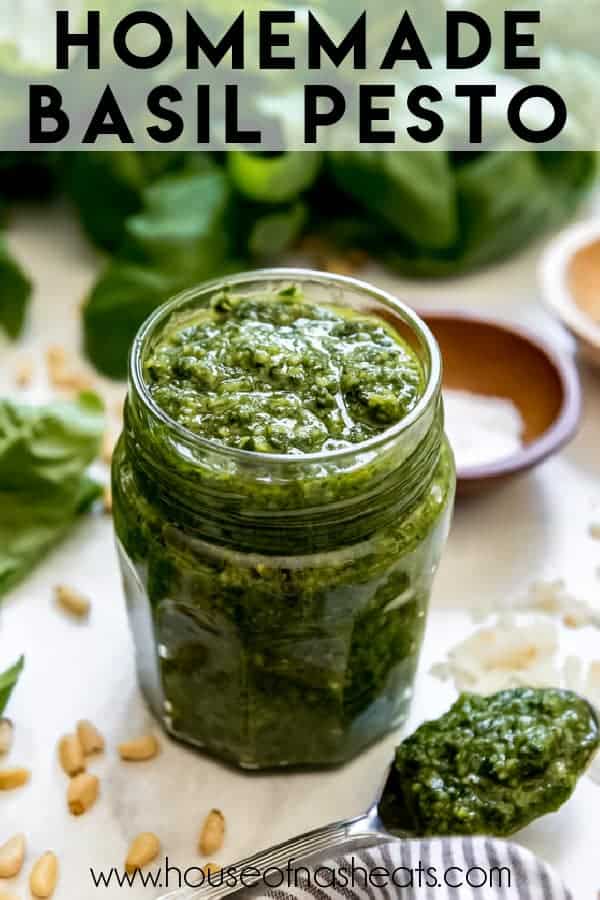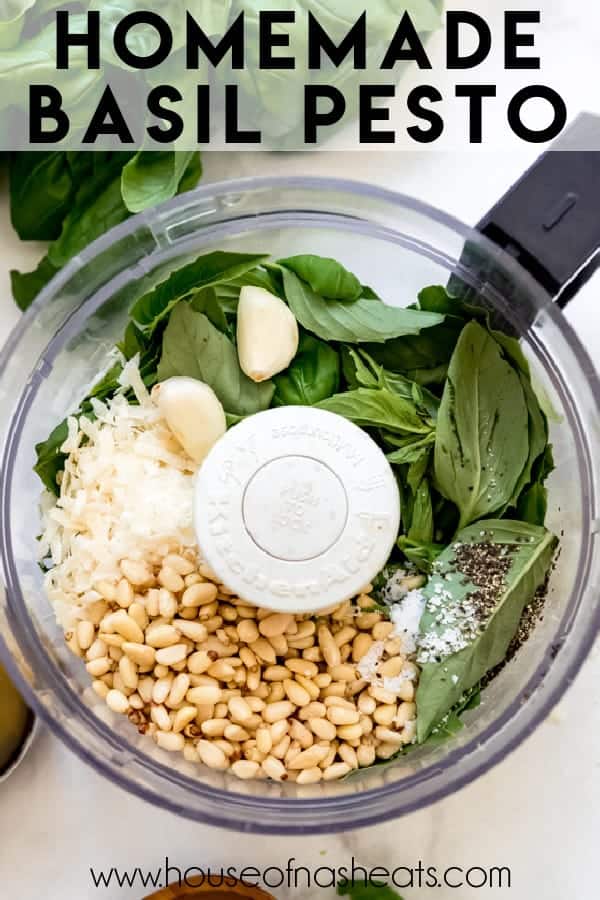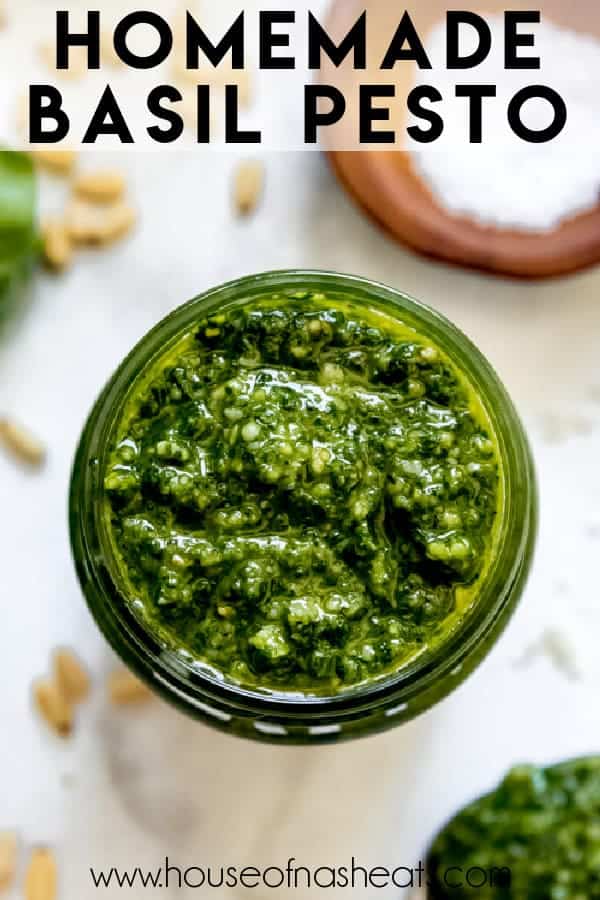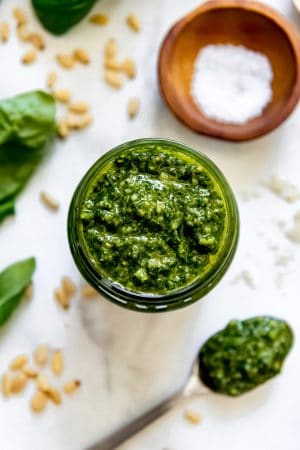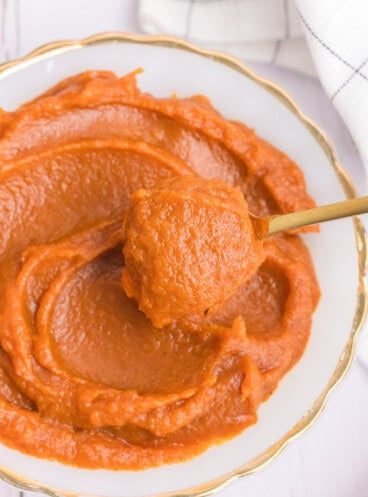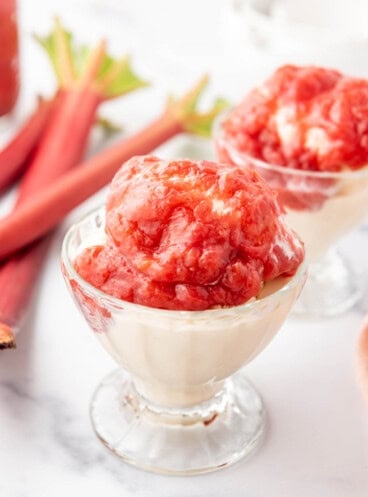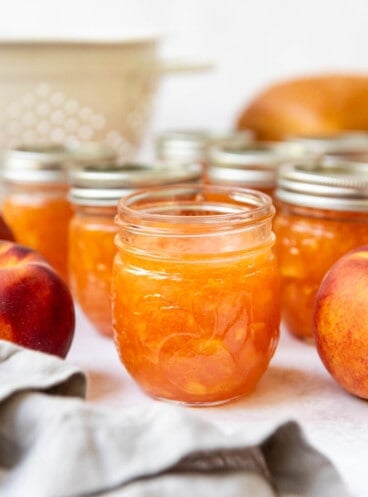This Homemade Basil Pesto recipe is made with simple, fresh ingredients in under five minutes. It’s so much better than store bought pesto and freezes well!
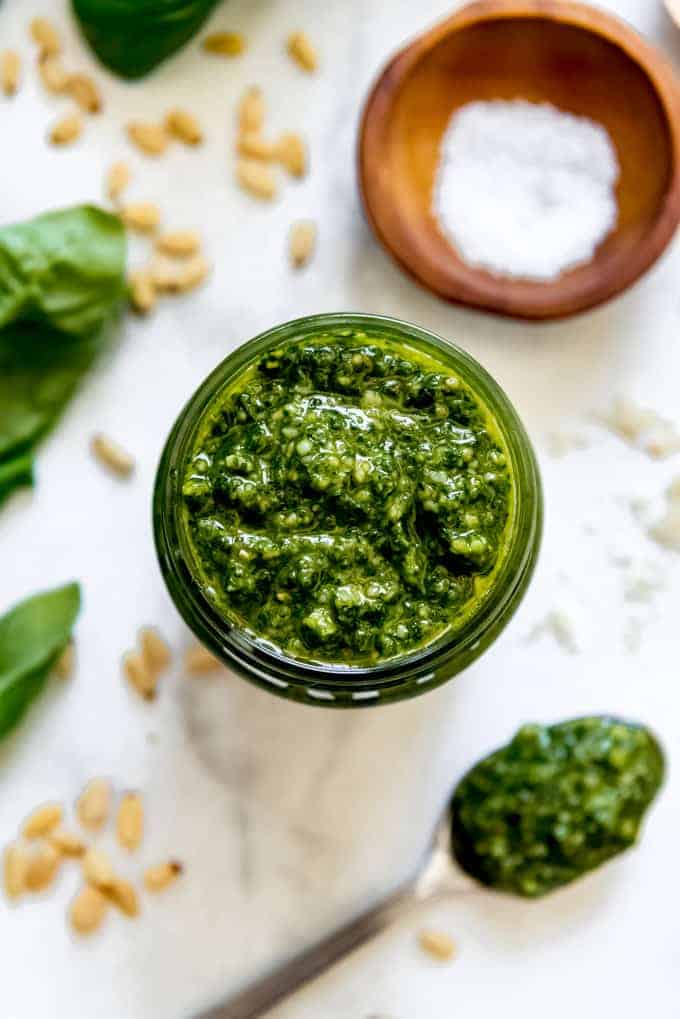
This fresh basil pesto is delicious on everything from pasta to sandwiches to grilled meat. We love to use it on our Veggie Pizza or added to Tuscan White Bean Soup for even more flavor!
If you have a basil plant in your garden, you might find yourself with more basil than you can use. This easy pesto recipe is made with those fresh basil leaves, parmesan cheese, pine nuts, olive oil, and garlic, plus a little salt and pepper to round things out.
Really good basil can be used in so many ways. Pesto sauce is the one most people seem familiar with, but we use it all the time like a condiment or spread by slathering it on soft Hawaiian rolls and stuffing them with deli meat for really delicious sandwiches!
What is pesto?
Pesto is a classic Italian recipe from the Genoa region of Italy. It is traditionally made by grinding fresh basil leaves in a mortar and pestle with pine nuts, parmesan cheese, garlic, and olive oil. These days it’s so much easier to make it using a food processor (affiliate link).
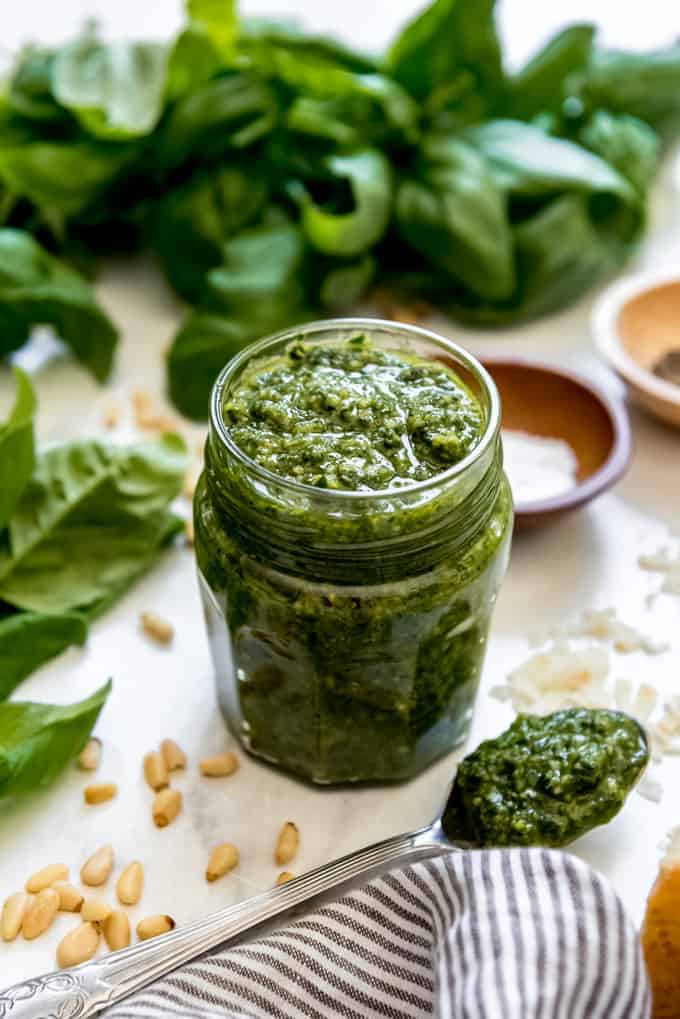
It’s similar to chimichurri sauce as both are made with finely chopped herbs, although the flavors are different.
I have always bought basil from Costco (they sell a really good one), but this year found myself with a lot of fresh basil on my hands. And after making it myself and seeing firsthand how easy it is, I’m not sure that I will ever be able to go back.
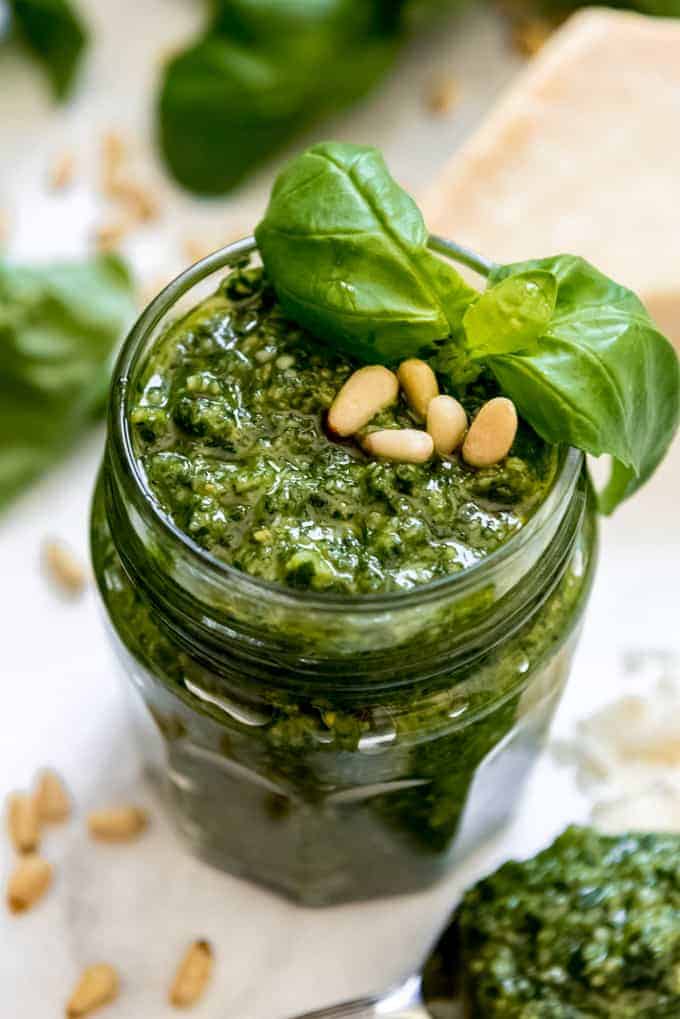
Pesto Ingredients
- Fresh basil leaves: It takes a bunch of fresh basil leaves to make a batch of pesto. Give it a quick wash to remove any dirt of debris, then pat the leaves dry with towels.
- Pine nuts: These little nuts are one of my favorite ingredients that I always have on hand in my freezer to toast and throw into salads or pastas. Toasting the pine nuts first is not absolutely necessary, but it helps bring out their flavor and adds dimension to your pesto sauce.
- Parmesan cheese: I highly recommend using freshly grated parmesan, not the powdery kind that comes in a can.
- Garlic cloves: Don’t skimp on the garlic. It adds so much flavor to this homemade pesto recipe!
- Extra virgin olive oil: This ingredient is important for both flavor and texture. It helps bind the other elements of the pesto together and makes it smooth and spreadable or able to melt into a sauce when added to hot pasta.
- Salt & pepper: These two bring out all of the other flavors and you can add more pepper if you want a little bit of kick to your pesto.
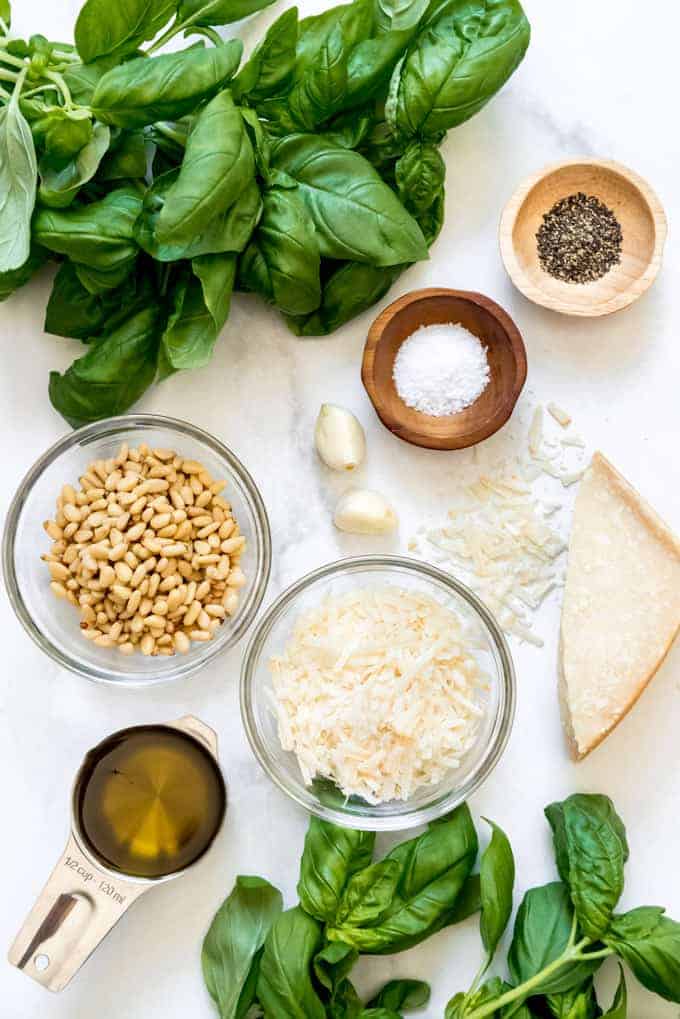
How to make pesto
- If you are going to toast your pine nuts, do this first by placing them in a dry pan over medium heat and letting them toast for 2-3 minutes, shaking frequently and checking to make sure they don’t burn. Let them cool before proceeding.
- Combine basil, pine nuts, parmesan, and garlic in the bowl of a food processor (affiliate link). Pulse for a few seconds until the ingredients are coarsely chopped.
- Add the olive oil and process until the pesto ingredients are finely chopped and the pesto has a fairly smooth consistency.
- Taste and adjust the seasoning of the salt and pepper as needed.
- Store in the fridge for about 1 week or freeze for up to 6 months.
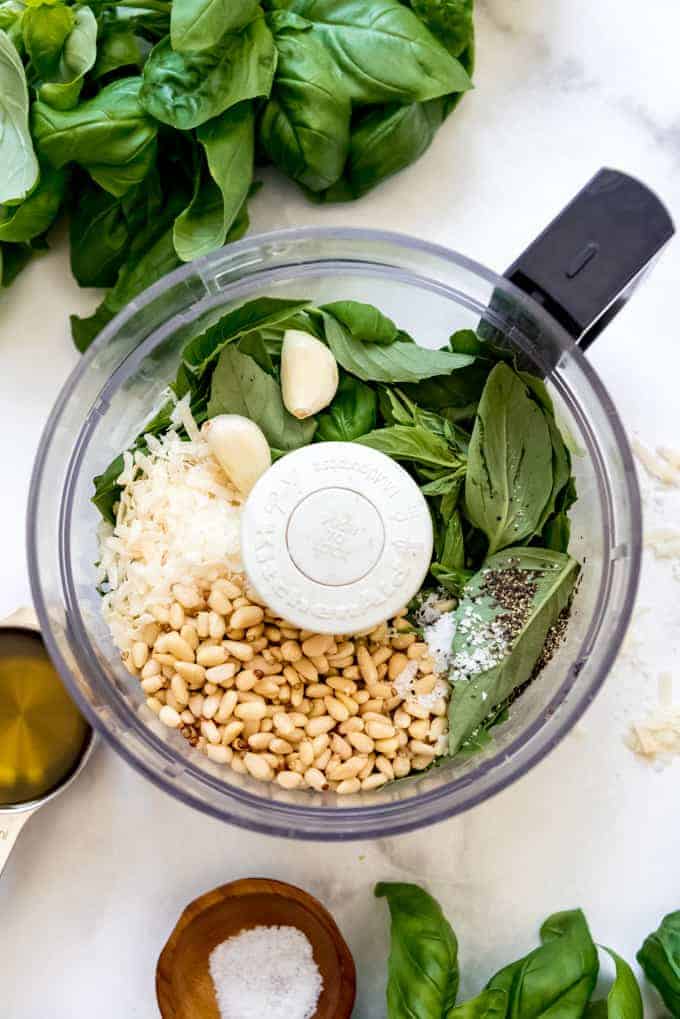
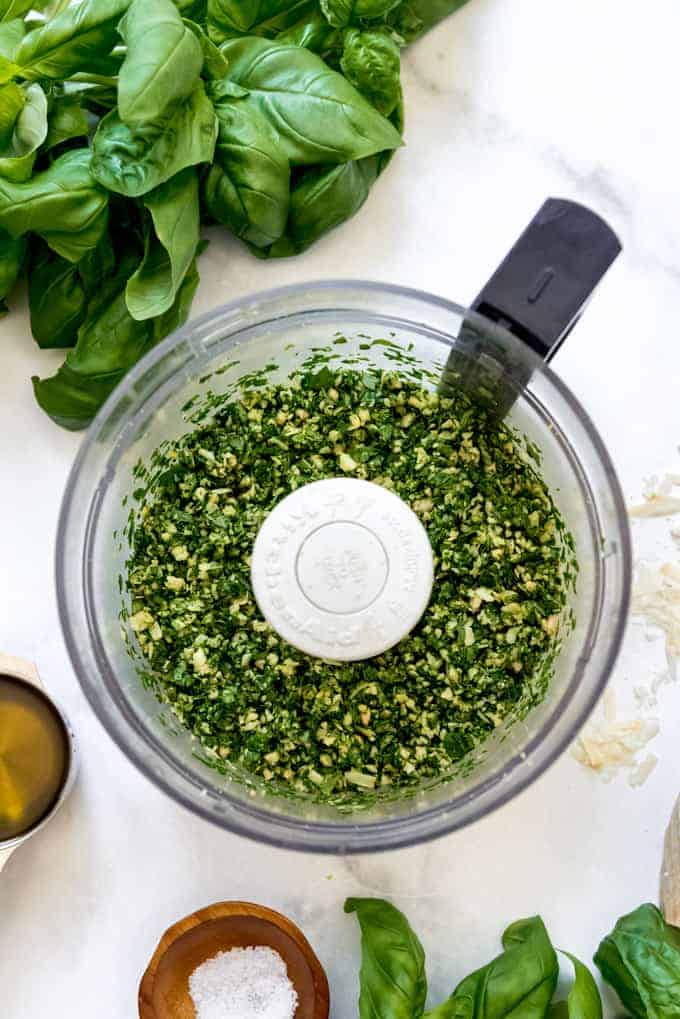
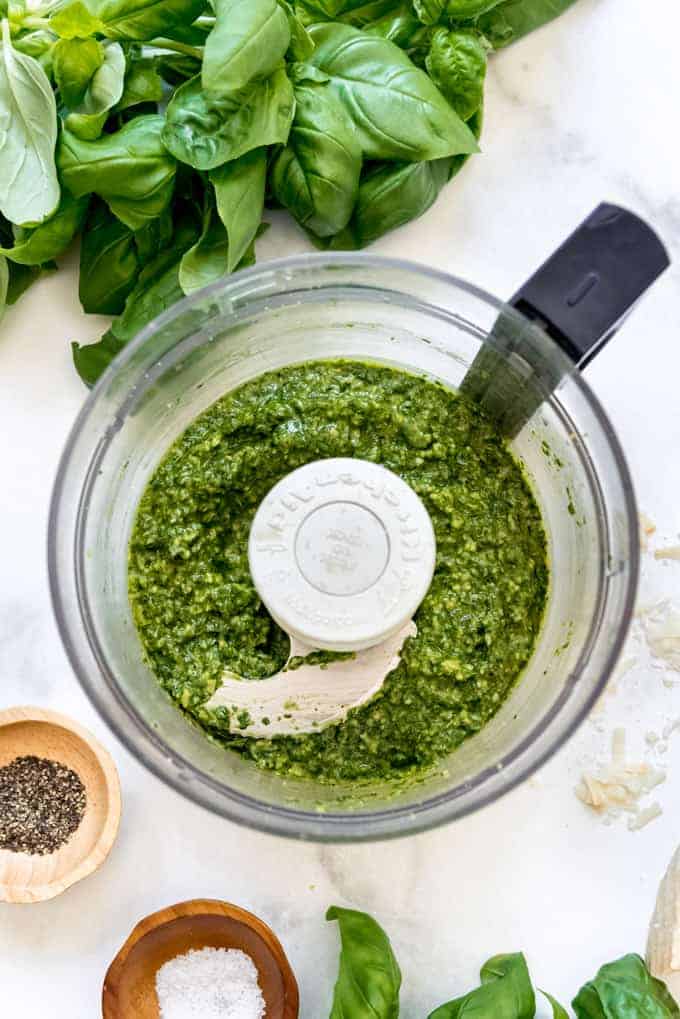
Pesto ingredient variations & substitutions
- Instead of basil: You can make pesto with greens other than fresh basil for a different flavor profile. Cilantro, kale, spinach, mint, parsley, arugula, or even carrot tops can be used to make pesto.
- Instead of parmesan cheese: Other hard cheeses like pecorino romano or asiago would work just as well.
- Instead of pine nuts: You can substitute walnuts, if you don’t have any pine nuts on hand as they are probably closest in texture and flavor. Almonds, cashews, or pistachios will also work. For those with nut allergies, you can use pumpkin or sesame seeds in place of the pine nuts to make a nut-free pesto recipe.
Basil pesto tips & tricks
- You can also make pesto in a blender if you don’t have a food processor (affiliate link). Or go the traditional route and use a mortar and pestle!
- A well-known hack is to put the freshly made pesto into ice cube trays and freeze it, then pop out the frozen pesto cubes and store in an airtight container. That way you just grab as much as you need for a recipe without needing to thaw an entire batch!
- Add your fresh basil pesto to grilled or roasted meat, fish, or vegetables, before or after cooking!
- Make pesto pasta by adding spoonfuls of pesto to hot noodles. I like to make it a little creamy by adding a splash of cream as well.
- Spread basil pesto on garlic bread and sprinkle with mozzarella cheese, then broil until toasty for a delicious side.
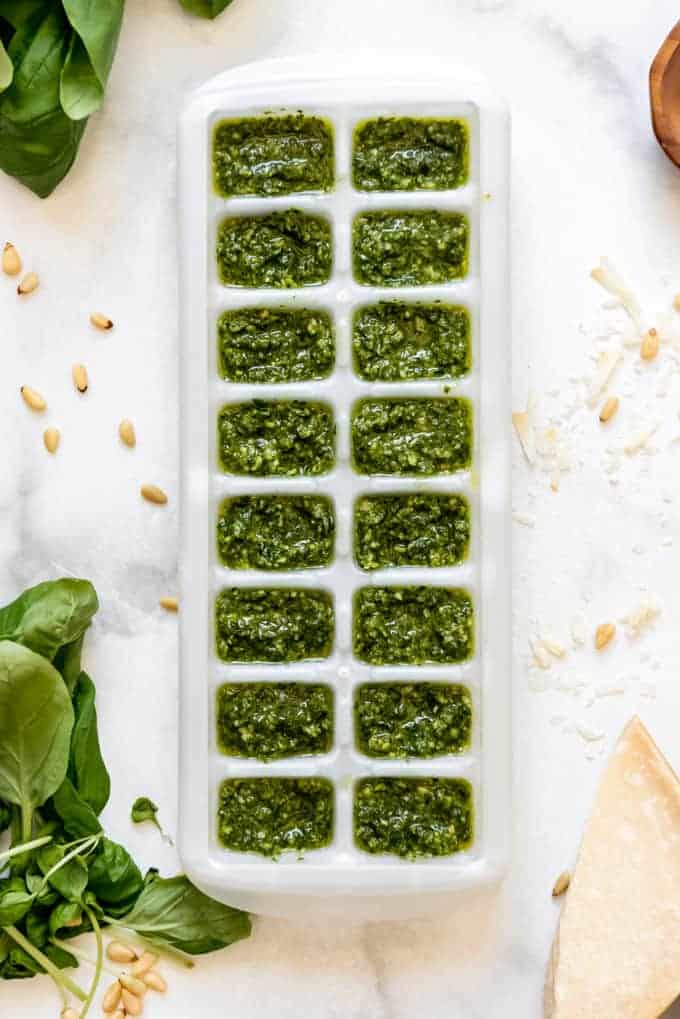
More spreads & sauces to make at home
- Bacon Jam
- Homemade, No-Cook Pizza Sauce
- Alabama White BBQ Sauce
- Homemade Aioli
- Greek Tzatziki Sauce
- Romesco Sauce
- Chimichurri Sauce
Did you make this recipe?
Let me know what you thought with a comment and rating below. You can also take a picture and tag me on Instagram @houseofnasheats or share it on the Pinterest pin so I can see.
Homemade Basil Pesto
Ingredients
- 2 cups packed fresh basil leaves about 2 large bunches
- 1/3 cup pine nuts
- 1/2 cup freshly grated parmesan cheese
- 2 cloves garlic
- 1/2 teaspoon kosher salt
- 1/4 teaspoon black pepper
- 1/2 cup olive oil
Instructions
- Combine basil leaves, pine nuts, parmesan cheese, garlic, salt, and pepper in a large food processor (affiliate link). Pulse to coarsely chop.2 cups packed fresh basil leaves, ⅓ cup pine nuts, ½ cup freshly grated parmesan cheese, 2 cloves garlic, ½ teaspoon kosher salt, ¼ teaspoon black pepper
- Continue to process, gradually adding the oil until the pesto is your desired consistency. Refrigerate for up to 2 weeks or freeze for up to 6 months.½ cup olive oil
Notes
- Walnuts, cashews, pistachios, almonds, or pumpkin seeds can be used in place of pine nuts.
- Arugula, parsley, cilantro, carrot tops, spinach, or kale can be used in place of basil.
- Pecorino romano, asiago, or other hard cheese can be used in place of parmesan.


